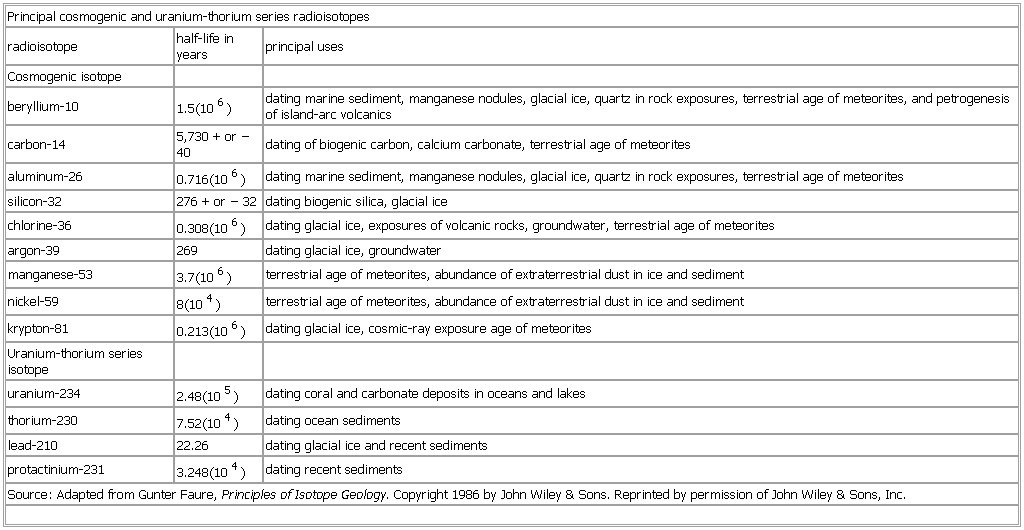- Principal cosmogenic and uranium-thorium series radioisotopes
-
▪ TablePrincipal cosmogenic and uranium-thorium series radioisotopesradioisotope half-life in years principal usesCosmogenic isotopeberyllium-10 1.5(106) dating marine sediment, manganese nodules, glacial ice, quartz in rock exposures, terrestrial age of meteorites, and petrogenesis of island-arc volcanicscarbon-14 5,730 + or − 40 dating of biogenic carbon, calcium carbonate, terrestrial age of meteoritesaluminum-26 0.716(106) dating marine sediment, manganese nodules, glacial ice, quartz in rock exposures, terrestrial age of meteoritessilicon-32 276 + or − 32 dating biogenic silica, glacial icechlorine-36 0.308(106) dating glacial ice, exposures of volcanic rocks, groundwater, terrestrial age of meteoritesargon-39 269 dating glacial ice, groundwatermanganese-53 3.7(106) terrestrial age of meteorites, abundance of extraterrestrial dust in ice and sedimentnickel-59 8(104) terrestrial age of meteorites, abundance of extraterrestrial dust in ice and sedimentkrypton-81 0.213(106) dating glacial ice, cosmic-ray exposure age of meteoritesUranium-thorium series isotopeuranium-234 2.48(105) dating coral and carbonate deposits in oceans and lakesthorium-230 7.52(104) dating ocean sedimentslead-210 22.26 dating glacial ice and recent sedimentsprotactinium-231 3.248(104) dating recent sedimentsSource: Adapted from Gunter Faure, Principles of Isotope Geology. Copyright 1986 by John Wiley & Sons. Reprinted by permission of John Wiley & Sons, Inc.See as table:

* * *
Universalium. 2010.
